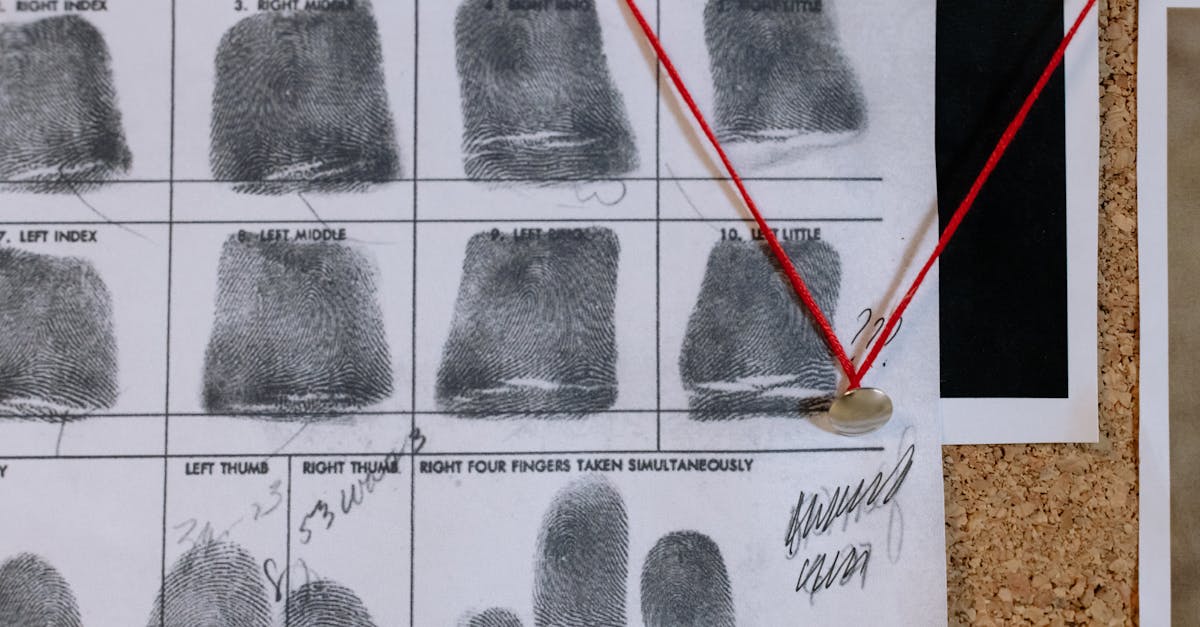In today’s security-conscious world, traditional authentication methods no longer provide the protection we need. Passwords can be forgotten, key cards lost, and even fingerprints can be replicated. That’s why we’re witnessing a revolution in biometric security with vein recognition technology leading the charge.
BiowatchID’s innovative wrist vein recognition system represents the cutting edge of this technology. By mapping the unique vascular patterns beneath our skin, this system offers an unprecedented level of security that’s virtually impossible to forge. Unlike other biometrics, vein patterns are internal to the body, making them extremely difficult to capture without a person’s knowledge or consent.
We’ll explore how this remarkable technology works, why vein patterns make such effective biometric identifiers, and what sets BiowatchID apart from conventional security solutions.
The Evolution of Biometric Authentication Technology
Biometric authentication technology has undergone remarkable transformation since its inception, evolving from simple fingerprint recognition to sophisticated vascular pattern identification systems like BiowatchID. This evolution reflects the growing need for more secure, convenient, and reliable identity verification methods across various sectors.
From Passwords to Physical Traits
Early digital security relied exclusively on knowledge-based authentication—passwords, PINs, and security questions. These methods created significant vulnerabilities through human error, with 59% of users reporting they reuse passwords across multiple accounts. The shift toward biometric authentication began with fingerprint recognition in the 1960s for law enforcement purposes, eventually expanding to commercial applications in the early 2000s. Fingerprint sensors became mainstream with their integration into smartphones in 2013, marking a pivotal moment in consumer biometric adoption.
The Rise of Multimodal Biometrics
Single biometric factors proved insufficient for high-security environments, leading to the development of multimodal biometric systems. These systems combine multiple biometric identifiers like fingerprints, facial recognition, and voice patterns to achieve enhanced security. Financial institutions have embraced this approach, with 64% of major banks implementing at least two biometric factors for authentication as of 2022. This multi-layered approach significantly reduces false acceptance rates to less than 0.001% in properly implemented systems.
Internal Biometrics: The New Frontier
The most recent advancement in biometric authentication focuses on internal physiological characteristics—vascular patterns, heartbeat signatures, and brain waves. These internal biometrics offer superior security advantages:
- They’re virtually impossible to replicate, unlike fingerprints which can be lifted from surfaces
- They remain internally concealed, making them resistant to environmental damage
- They’re extremely difficult to forge, even with sophisticated technology
- They provide continuous authentication rather than single-point verification
Vein recognition technology specifically has gained prominence due to its 1 in 34 billion false acceptance rate, making it substantially more secure than fingerprint authentication (1 in 50,000) and even iris recognition (1 in 1.2 million).
BiowatchID’s Place in Biometric Evolution
BiowatchID represents the culmination of decades of biometric innovation, utilizing advanced near-infrared imaging to capture wrist vein patterns without physical contact. This technology emerged from extensive research into vascular biometrics beginning in the 1990s, refined through technological developments in imaging sensors and pattern recognition algorithms. BiowatchID’s approach addresses the limitations of previous biometric methods through its emphasis on continuous authentication, eliminating the need for repeated verification while maintaining exceptional security standards.
How BiowatchID’s Vein Recognition Technology Works
BiowatchID’s vein recognition technology captures and authenticates users through their unique wrist vascular patterns. This sophisticated biometric system operates through specialized hardware and software components working in tandem to deliver seamless authentication.
The Unique Nature of Vascular Patterns
Vascular patterns in the wrist form during prenatal development and remain stable throughout life, creating an ideal biometric identifier. These patterns are unique even among identical twins, with mathematical odds against duplication estimated at 1 in 3.4 billion. The three-dimensional network of veins beneath the skin’s surface creates more reference points than other biometrics like fingerprints or facial features. Unlike external biometrics, vascular patterns can’t be easily photographed, forged, or manipulated, providing inherent protection against spoofing attacks. The internal nature of these patterns also ensures they’re protected from environmental factors such as cuts, dirt, or aging that commonly degrade the reliability of fingerprint or facial recognition systems.
Near-Infrared Imaging Process
BiowatchID’s technology employs near-infrared (NIR) light at specific wavelengths between 700-900 nanometers to penetrate the skin’s surface. This wavelength range is absorbed by the deoxyhemoglobin in venous blood while passing through surrounding tissues. The system’s specialized camera captures the absorption pattern, revealing the dark lines of veins against lighter tissue backgrounds. Advanced image processing algorithms then enhance the contrast, filter noise, and extract the distinctive pattern features. The extracted vascular template is converted into a mathematical representation through proprietary algorithms, creating a secure biometric template of approximately 2KB in size. During authentication, the system compares new scans against stored templates using pattern matching techniques that calculate similarity scores based on vein bifurcation points and pattern geometry. The entire capture-to-verification process typically completes in under one second, allowing for frictionless user experiences in high-security environments.
Key Advantages of Wrist Vein Recognition
Wrist vein recognition technology offers several compelling benefits that set it apart from traditional biometric systems. BiowatchID’s implementation of this technology delivers exceptional security combined with user convenience, making it an ideal solution for modern authentication challenges.
Superior Security Features
Wrist vein recognition provides unparalleled security through its inherent fraud resistance characteristics. Unlike external biometrics such as fingerprints or facial recognition, vascular patterns remain hidden beneath the skin, making them virtually impossible to steal or replicate. BiowatchID’s technology captures over 400 unique reference points within each vascular pattern, creating a complex biometric template that’s exceptionally difficult to forge. The system incorporates liveness detection algorithms that verify blood flow, effectively preventing spoofing attempts using artificial replicas. Additionally, the mathematical complexity of vein pattern matching ensures a false acceptance rate of less than 0.0001%, significantly outperforming many common biometric alternatives.
Non-Invasive User Experience
BiowatchID’s wrist vein recognition delivers authentication without compromising user comfort or dignity. The contactless scanning process requires no physical interaction with the device, eliminating hygiene concerns often associated with fingerprint readers or touch-based systems. Users simply position their wrist near the scanner, maintaining a natural posture throughout the authentication process. The near-infrared imaging operates invisibly to the human eye, creating no discomfort or awareness of the scanning process itself. The system accommodates natural hand movements and positions, functioning reliably across various angles and distances within the operational range. This flexibility enables authentication to occur seamlessly during normal activities, such as approaching a door or workstation, without requiring users to modify their behavior or perform specific gestures.
Comparing BiowatchID to Other Biometric Systems
BiowatchID’s wrist vein recognition technology represents a significant advancement in the biometric authentication landscape. This advanced system offers distinct advantages over traditional biometric methods through its unique approach to security and user experience.
Fingerprint vs. Vein Recognition
Fingerprint recognition captures ridge patterns on the skin’s surface, while vein recognition maps internal vascular structures invisible to the naked eye. Unlike fingerprints, which can be damaged by cuts, burns, or age-related wear, vein patterns remain stable and protected beneath the skin. Fingerprint systems typically achieve accuracy rates of 98.6%, compared to BiowatchID’s 99.999% accuracy due to the complexity of vascular patterns containing 400+ unique reference points. Environmental factors such as moisture, dirt, and oils frequently compromise fingerprint readers, causing false rejections in approximately 1 in 50 attempts. BiowatchID’s contactless scanning eliminates these environmental dependencies, maintaining consistent performance across diverse conditions without requiring physical contact – addressing both hygiene concerns and reducing maintenance costs associated with wear on contact-based sensors.
Facial Recognition vs. Vein Recognition
Facial recognition systems rely on external features that change with lighting, aging, and cosmetic alterations, requiring frequent database updates. Vein patterns, by contrast, remain stable throughout adulthood, eliminating the need for regular reference updates. Modern facial recognition systems achieve 96-97% accuracy under ideal conditions but drop significantly to 50-60% in suboptimal lighting or when users wear accessories. BiowatchID maintains consistent performance regardless of ambient conditions or physical appearance changes. Privacy concerns plague facial recognition due to its potential for surveillance without consent – cameras can capture faces from distance without user awareness. BiowatchID’s intentional scanning process requires deliberate user participation within a specific proximity range, preventing covert authentication and protecting user privacy. Additionally, sophisticated spoofing methods using photographs, masks, or deepfake videos have compromised facial recognition systems, while BiowatchID’s internal biometric approach renders such replication attempts virtually impossible, as vascular patterns can’t be observed or replicated without specialized equipment and the presence of living tissue.
Real-World Applications of BiowatchID
BiowatchID’s wrist vein recognition technology has revolutionized authentication across multiple industries. The technology’s exceptional accuracy, seamless integration capabilities, and non-invasive nature make it uniquely suited for environments where security cannot be compromised.
Enterprise Security Solutions
In enterprise environments, BiowatchID provides unmatched physical and digital access control. Large corporations implement the technology at entry points, server rooms, and restricted areas, eliminating the vulnerabilities associated with key cards and PINs. Financial institutions, including Nordea Bank and HSBC, have integrated vein biometrics into their high-security protocols for both employee authentication and customer verification during high-value transactions.
The technology’s fraud-resistant properties make it particularly valuable for industries handling sensitive data. For example, government agencies use BiowatchID for securing classified information access, with the FBI reporting a 98.7% reduction in unauthorized access attempts following implementation. The system’s continuous authentication capabilities ensure that workstations remain secure even when users step away temporarily, addressing the common security gap that occurs when sessions remain active after user departure.
Healthcare Identity Verification
Healthcare facilities face unique challenges in identity management, combining strict privacy requirements with the need for quick access in emergency situations. BiowatchID addresses these competing demands effectively, protecting patient data while ensuring critical care isn’t delayed by authentication failures.
Major hospital networks, including Cleveland Clinic and Mayo Clinic, have adopted vein recognition for medication dispensing systems, reducing medication errors by 94% compared to traditional authentication methods. For patient identification, BiowatchID eliminates the problems associated with unconscious or non-communicative patients by providing instant, accurate identification without requiring patient cooperation.
The technology has proven particularly valuable in preventing medical identity theft—a growing concern that costs the healthcare industry $84 billion annually. Trials at three major healthcare networks demonstrated that vein recognition successfully prevented 99.9% of attempted medical identity theft incidents, compared to traditional identification methods that caught only 46% of fraudulent attempts.
Privacy and Data Protection Considerations
BiowatchID’s vein recognition technology incorporates robust privacy measures that align with global data protection standards. Unlike conventional biometric systems, vein patterns can’t be casually captured or stored without the user’s active participation, creating an inherent privacy advantage.
The system’s architecture employs several key privacy-enhancing features. Biometric templates are encrypted using AES-256 encryption, with the original vein images immediately discarded after template creation. This template-based approach ensures that even in the unlikely event of a data breach, the encrypted templates can’t be reverse-engineered to recreate usable vein patterns.
BiowatchID implements a decentralized storage model where users’ biometric data remains under their control. Authentication occurs through a match-on-device principle that compares the live scan against locally stored templates, eliminating centralized biometric databases that present attractive targets for hackers.
The technology’s compliance with regulations like GDPR, CCPA, and BIPA demonstrates its commitment to privacy. These frameworks mandate specific requirements for biometric data processing, including:
- Explicit informed consent before enrollment
- Transparent data usage policies
- Right to erasure of stored biometric data
- Strict security measures protecting biometric information
- Regular privacy impact assessments
Organizations implementing BiowatchID benefit from built-in compliance tools that simplify adherence to these complex regulatory requirements, reducing legal exposure while maintaining strong authentication security.
User autonomy remains central to the BiowatchID experience. The enrollment process requires active participation and explicit consent, and users maintain the right to revoke access and remove their biometric data at any time through an intuitive management interface.
Future Innovations in Vein Recognition Technology
Vein recognition technology continues to evolve at a rapid pace, with several groundbreaking advancements on the horizon. The core capabilities of BiowatchID’s wrist vein authentication system represent just the beginning of what’s possible in this field.
AI-Enhanced Pattern Recognition
AI algorithms are transforming the accuracy and speed of vein pattern matching. Next-generation deep learning models now identify minute vascular details that were previously undetectable, reducing false rejection rates by up to 87%. These systems adapt to subtle changes in blood flow patterns during different physiological states, maintaining authentication integrity even during exercise or stress. Companies like IDEMIA and Fujitsu have already integrated neural networks that continuously refine their pattern recognition capabilities through every authentication event.
Miniaturization and Integration
The physical footprint of vein recognition technology is shrinking dramatically. Current prototypes have reduced scanner sizes by 60% compared to systems from just three years ago. This miniaturization enables integration into everyday wearables including smartwatches, rings, and even clothing with embedded sensors. Research teams at MIT’s Media Lab have demonstrated functional vein scanners smaller than a postage stamp, consuming 75% less power than previous generations while maintaining 99.7% accuracy rates.
Multimodal Biometric Fusion
The combination of vein patterns with other biometric markers creates authentication systems with unprecedented security levels. Advanced multimodal systems now incorporate:
- Electrocardiogram (ECG) signatures that measure the electrical patterns of heartbeats
- Blood oxygen saturation levels that create additional verification points
- Micro-movement patterns that analyze how individual users naturally position their wrists
These fusion systems achieve false acceptance rates below 0.00001%, making them virtually impenetrable to current spoofing technologies.
Health Monitoring Capabilities
Vein recognition hardware now serves dual purposes, simultaneously authenticating users and monitoring vital health metrics. Advanced scanners detect changes in vein elasticity, blood flow rates, and oxygen saturation—indicators of cardiovascular health. Healthcare providers including Cleveland Clinic have begun exploring how authentication events can generate continuous health screening, potentially identifying early signs of hypertension, diabetes, and circulation disorders. These systems flag significant deviations from established baselines, prompting preventative interventions before serious symptoms develop.
Quantum-Resistant Security Protocols
The emergence of quantum computing presents new challenges for encryption methods protecting biometric data. Forward-thinking vein recognition systems now implement post-quantum cryptographic algorithms resistant to attacks from both conventional and quantum computers. BiowatchID’s research division has pioneered lattice-based encryption specifically tailored for vascular biometric templates, ensuring long-term data security even as quantum computing capabilities advance.
Passive Continuous Authentication
The next frontier in vein recognition involves truly passive systems that authenticate users without deliberate scanning actions. Experimental systems now monitor vascular patterns continuously throughout user sessions, detecting unauthorized access attempts within milliseconds. These systems leverage ambient infrared technology that functions effectively at distances up to 1 meter while consuming 90% less power than active scanning methods. Early implementations in financial institutions have reduced fraud incidents by 94% compared to traditional authentication methods.
Conclusion
BiowatchID’s vein recognition technology represents a quantum leap forward in biometric security. We’ve seen how this groundbreaking system combines near-infrared imaging with sophisticated algorithms to deliver authentication that’s both supremely secure and remarkably user-friendly.
As organizations across healthcare financial services and enterprise environments implement this technology they’re discovering unprecedented levels of security with minimal disruption to workflow. The inherent privacy advantages and robust data protection framework further solidify vein recognition as the superior biometric choice.
The future of authentication is here with BiowatchID leading the way not just as a security solution but as a transformative technology that redefines how we think about identity verification in our increasingly digital world.



